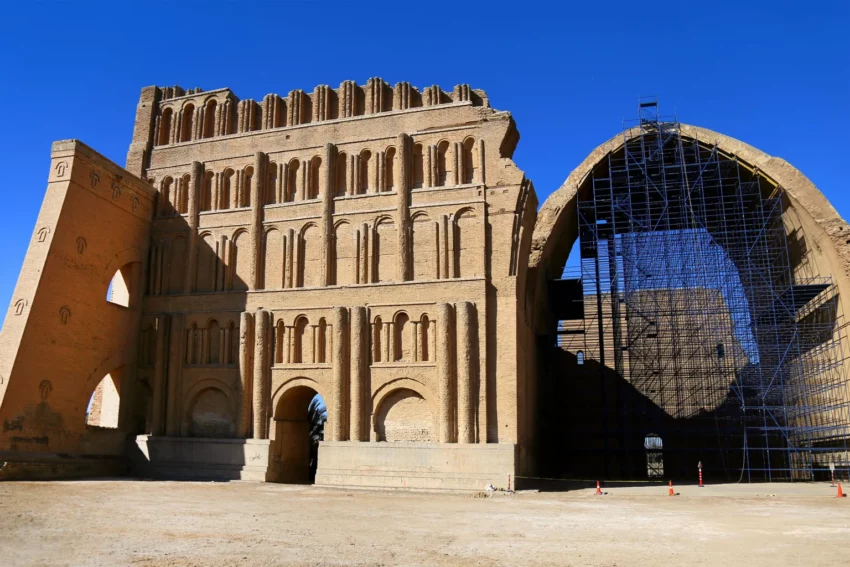Get your dose of History via Email
The Historical Significance of Taq Kasra
Taq Kasra, also known as the Archway of Ctesiphon, stands as a testament to the architectural prowess of the Sasanian Empire, which ruled from 224 to 651 AD. This remarkable structure is located in what is now the town of Salman Pak, near Baghdad in modern-day Iraq. It is one of the most significant and enduring symbols of the Sasanian civilization, representing a period of rich cultural and political history.
Architectural Marvel of the Sasanian Empire
Constructed during the reign of King Khosrow I, who ruled from 531 to 579 AD, Taq Kasra was part of the imperial palace complex situated in the city of Ctesiphon, the Sasanian capital. The arch was erected as an emblem of the empire’s might and to symbolize the glory and grandiosity of the Sasanian rulers. Taq Kasra is recognized as one of the largest vaulted structures to have survived from the ancient world, measuring approximately 37 meters in height, 26 meters in width, and with a span of some 25 meters.
Surviving Through Ages
Despite the passage of time and the challenges posed by both natural elements and human actions, Taq Kasra has withstood the test of time. However, it is undeniable that it has suffered from neglect and vandalism, especially during periods of conflict in the region. The arch has lost its right-hand side, and parts of the remaining structure are deteriorating. Conservation efforts have been undertaken intermittently, with various degrees of success, to preserve what is left of this ancient monument for posterity.
Cultural and Historical Influence
The cultural impact of Taq Kasra stretches beyond the borders of the Sasanian Empire, influencing both Islamic and Persian architecture. Its grand iwan (vaulted hall) echoes in the subsequent constructions throughout the region. The structure has also been a subject of various legends and inspired a range of artistic endeavors. One of such tales ascribes the construction of the Taq Kasra to none other than the legendary queen, Sheba, harking back to the deep roots the arch has within regional folklore.
Recent Developments
In modern times, the site of Taq Kasra has been the focus of both research and tourism. Initiatives have been taken to study and document the arch, with researchers and archaeologists from around the world showing a keen interest in its history and structural composition. The monument, despite its dilapidated state, continues to attract tourists who are eager to witness this colossal piece of history firsthand.
The Present State and Efforts for Preservation
Today, Taq Kasra is in a fragile condition, its future uncertain. The structure is at risk of further erosion and damage due to environmental factors and human negligence. Active efforts are needed to preserve this iconic monument, which serves as a significant link to our world’s ancient civilizational history. The significance of Taq Kasra as a cultural, architectural, and historical monument underscores the need for its preservation as a part of the shared heritage of humanity.
Taq Kasra’s legacy as a marvel of the Sasanian era lives on, embedded in the annals of history as a powerful symbol of architectural innovation and cultural grandeur. It remains a significant subject for academic study and continues to fascinate historians, archaeologists, and the general public. As initiatives towards its preservation and restoration gain traction, it underscores the universal value and the imperative to safeguard such invaluable historical treasures for current and future generations.


1 thought on “Taq Kasra”